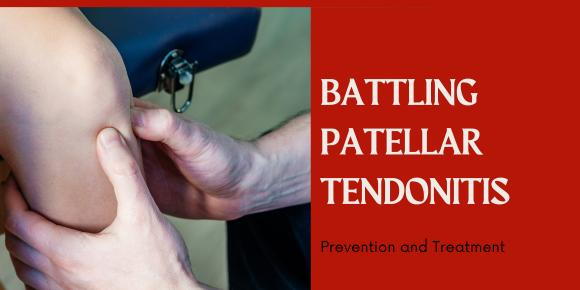
Patellar tendonitis, commonly known as "jumper's knee," is a painful condition that affects the tendon connecting the kneecap (patella) to the shinbone (tibia). This injury is often seen in athletes, particularly those involved in high-impact sports like basketball. Don't miss the chance to learn more about injury prevention at our upcoming basketball workshop on November 15th at 7pm in our office!
What is Patellar Tendonitis?
Patellar tendonitis is an overuse injury that results from repetitive stress on the patellar tendon. When the tendon is subjected to excessive strain, it can become inflamed and painful. Basketball players frequently experience patellar tendonitis due to the repeated jumping, abrupt stops, and sudden changes in direction that the sport demands. The pain is often concentrated just below the kneecap, making it difficult for affected individuals to participate fully in their athletic activities.
Preventing Patellar Tendonitis:
Preventing patellar tendonitis is crucial for athletes, as it can be a persistent and debilitating condition. Here are some strategies to help reduce your risk of developing jumper's knee:
1. Warm-up and Cool Down: Prior to any physical activity, including basketball, ensure you warm up your muscles and tendons. A proper warm-up routine can help prepare your body for the demands of the game and reduce the risk of injury.
2. Strengthening Exercises: Incorporate leg-strengthening exercises into your fitness routine. Exercises that target the quadriceps and hamstrings can help stabilize the knee joint and reduce stress on the patellar tendon.
3. Proper Technique: Pay attention to your jumping and landing techniques. Use proper form and mechanics to minimize excessive strain on your knees during high-intensity movements.
4. Gradual Progression: Avoid sudden increases in the intensity or duration of your workouts. Gradually build up your training load to give your body time to adapt.
Treatment for Patellar Tendonitis:
If you are already experiencing symptoms of patellar tendonitis, prompt and appropriate treatment is essential for recovery. Here are some common approaches to managing this condition:
1. Rest: Give your body time to heal by reducing or eliminating high-impact activities like basketball.
2. Ice and Anti-Inflammatories: Applying ice and using over-the-counter anti-inflammatory medications can help reduce pain and inflammation.
3. Chiropractic care: Our clinicians can create a tailored rehabilitation plan that includes exercises to improve strength and flexibility in the affected area.
4. Bracing and Support: Wearing a knee brace or strap may provide additional support and alleviate some discomfort during activity.
Upcoming workshop alert!!! Join us for an informative and interactive basketball injury prevention workshop on November 15th at 7pm in our office. Whether you're a seasoned player or new to the game, this workshop will provide valuable insights into reducing your risk of injuries like patellar tendonitis. Our expert clinicians will cover common injuries and prevention strategies, including patellar tendonitis. Don't let injuries hold you back from enjoying the game you love. Call our office to reserve your spot today and invest in your long-term basketball performance and health.
Patellar tendonitis is a common issue among athletes, especially those who play high-impact sports like basketball. However, with proper prevention strategies and timely treatment, you can minimize the risk and recover from this condition. We hope to see you at our basketball injury prevention workshop on November 15th to learn more about staying in top shape on the court. Stay safe and injury-free, and keep enjoying the game you're passionate about.
